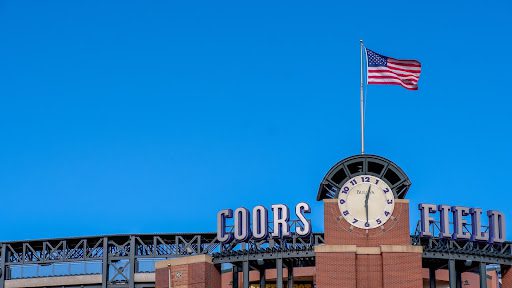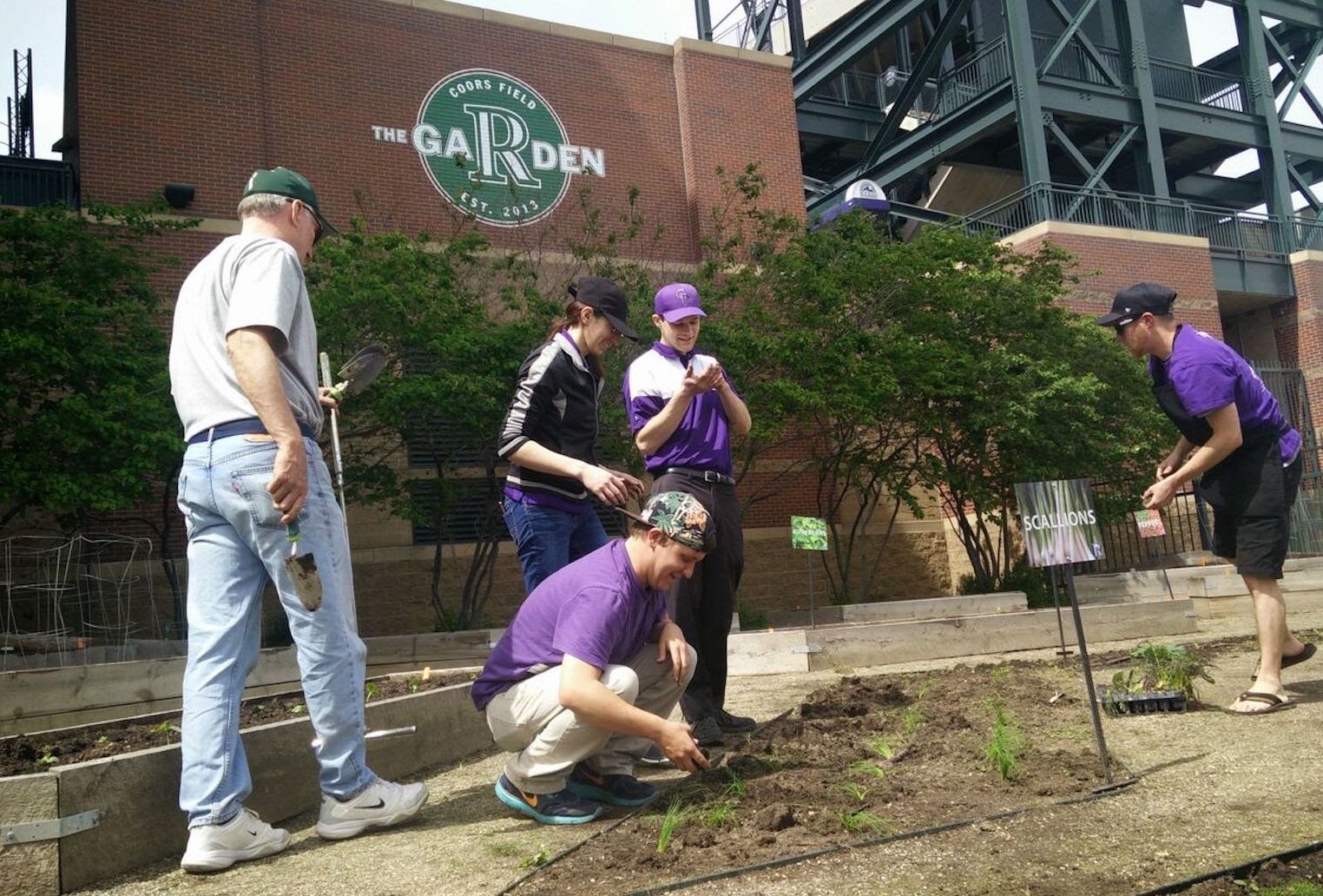“And there in the blue air, I saw for the first time, far off, the great snowy tops of the Rocky Mountains. I had to get to Denver at once.”
Jack Kerouac
Coors Field, the home of the Colorado Rockies and this year’s All-Star Game, has been praised as one of baseball’s most beautiful parks since its opening in Denver in 1995.
It has been hailed for its innovative mix of retro design and modern conveniences, and its view of the sun setting behind the Rocky Mountains will take your breath away.
With the single row of purple seats that mark the mile above sea level across the Upper Deck and its hand-laid bricks, Coors Field was the first major league stadium to house a brewery and the first National League ballpark to sell gluten-free food at its concession stands. Furthermore, Coors Field has been cited as being one of the first ballparks with an on-site sustainable garden, Coors Field’s GaRden (with a capital R as a nod to its home team, the Rockies).

The first thing one notices about the GaRden is its ground-breaking design. The 600-square-foot space resembles a ballpark as its raised gardening beds are terraced to suggest the “outfield” stands surrounding the “infield”.
The GaRden is a unique collaboration between The Rockies, ARAMARK (the team’s food and beverage partner), and Colorado State University’s Institute for the Built Environment (IBE). Both the Rockies and ARAMARK have a history of being green-conscious in their operations. The baseball team has extensive recycling and energy programs while ARAMARK has long promoted sustainable practices in such areas as food purchasing, green cleaning, and water conservation.
Coor Field’s garden also exemplifies IBE’s sustainable design ethos to spread understanding about sustainable activities and their positive effects on health. The garden construction was handled with an eye to its environmental impact. The tiered beds were built with beetle-kill pinewood while recycled materials were used to create the irrigation drip lines. High-quality worm castings were brought in to enrich the organic soil. The soil also benefited from Miracle-Gro’s donations of its organic Nature’s Care products and pest management products geared for certified organic gardening.

The Rockies additionally have teamed with Produce Denver to assist in the garden’s planting and maintenance. Typically, three different plantings are done in the garden during the season, which allows for rolling harvests. The GaRden’s crop yield has contained a broad variety of vegetables (such as tomatoes, peppers, beets, cabbage, peas, squash, eggplant, kale, carrots, beans, and corn) and herbs (including parsley, thyme, basil, cilantro, dill, oregano, and sage). The fresh organic produce is utilized by the Coors Field chefs in the stadium’s Mountain Ranch Club restaurant along with the “build-your-own” salad bar (which boasts over 30 items) in the Infield Greens concession area.
The GaRden also features flowering ornamentals and plants as well as edible flowers. If you notice a purple hue to many of them, it is for a reason. As Mark Uchanski, a professor in Colorado State University’s College of Agricultural Sciences, explained: “We wanted to go with the theme of the Colorado Rockies and their color, so we chose flowering plants as well as herbs, like chives, that have purple flowers. Some things like basil that are familiar in a green form, we chose the purple version, all to fit in with that overall color scheme that you see around the stadium.” In fact, organic Purple Viking potatoes were planted in 2015 that could be made into purple potato chips to be sold at the stadium.
Situated behind the center-field wall, the GaRden can be seen by the hundreds of thousands of fans passing through Coors Field’s Gate A every season on their way to their seats to watch a Colorado Rockies game. Not only does the garden offer a lovely display of colorful vegetables, herbs, and flowers, but it also acts as a reminder of the hyper-fresh ingredients grown and served in the stadium as well as planting the seeds in fans’ heads about the significance of healthy eating habits. That’s a “win-win” no matter how you score it.





